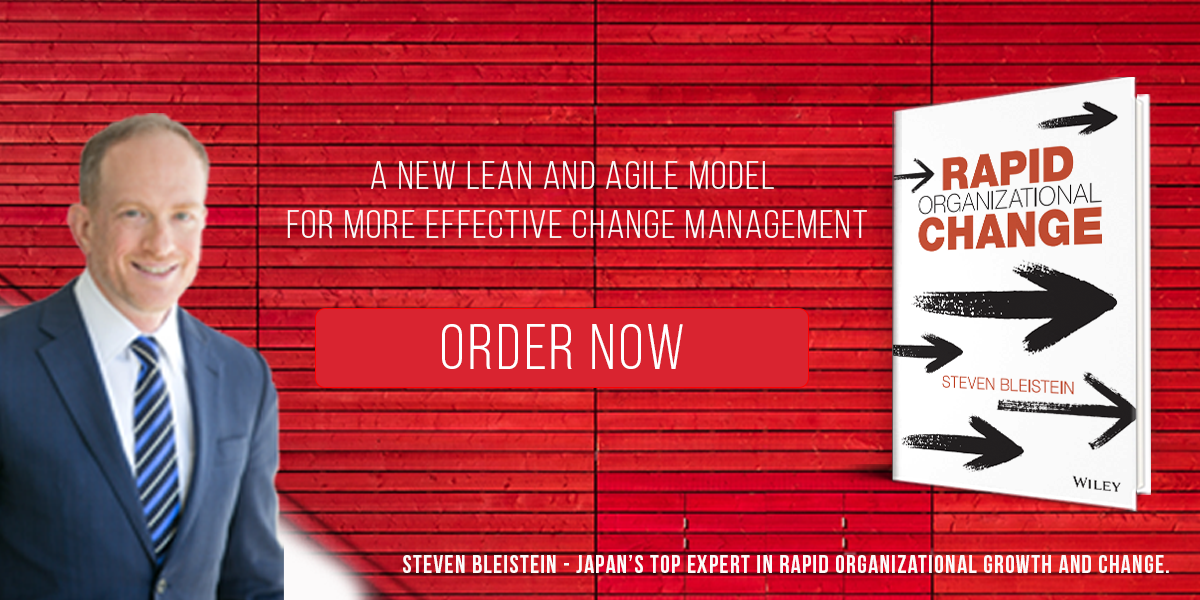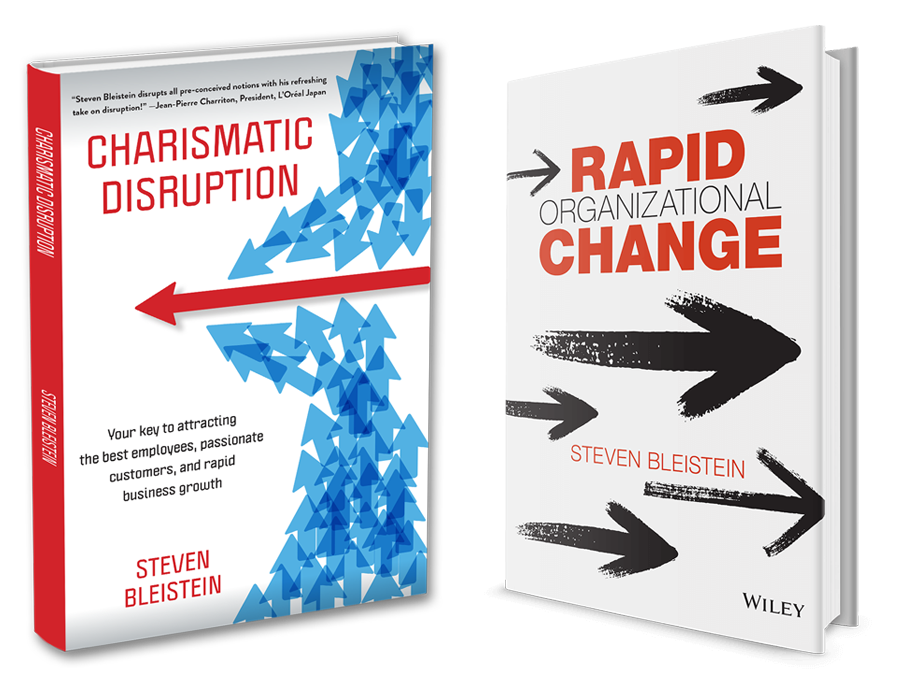[:en]
 A CEO client of mine asked for advice on pressure he was receiving from the head office for a dramatic increase in sales targets for the coming year. He has successfully grown business consistently every year at a faster rate than any other country’s operation within the group. His managers now want more — a typical situation for many of my clients.
A CEO client of mine asked for advice on pressure he was receiving from the head office for a dramatic increase in sales targets for the coming year. He has successfully grown business consistently every year at a faster rate than any other country’s operation within the group. His managers now want more — a typical situation for many of my clients.
“The targets are really ambitious, and I am concerned about being able to achieve them. I don’t want my team to be discouraged and I don’t want to fail. Should I push back?” he asked.
“No, push forward!” I said. “Never push back!”
“What do you mean?” He asked, and I explained.
Nothing is really ever impossible. There is usually always a way to achieve even extremely ambitious targets. It is a matter of method, time, money and people required, and your tolerance for risk. Pushing forward is about discussing options for achieving any goal in the context of changed methods and resources, the risks involved, and how the risks might be mitigated. It is pointless to reject any proposed goal or target out of hand without a discussion of this kind of contact. Then, you can make a rational business decision together.
So, for example, if you are asked to double the business next year, rather than pushing back, you might respond by proposing that you have the following options:
- Acquire company
- Increase our sales force and target the Kansai area where you are not present
- Raise are prices on our most competitive items and drop products that are more commodity-like so sales people can focus on the highest value offerings
Each option has associated risks. For example, raising prices on the most competitive products may cause some customers to balk. You can lose out if you fail to choose an optimal price increase. Also, your sales force may resist dropping the commodity-like products. You may also find that the sales force is ill-equipped to sell the highest value products because as it is a complex sale that requires the business acumen to understand the customer’s business, as opposed to the commodity-like products when there only issues are price and delivery time.
Each option also has associated requirements for investment. For example, raising prices on the most competitive products might require improving capabilities of the sales force. That will require an investment of time, and perhaps money to get help in educating sales people in better methods or hiring new sales people with a different skill set.
It is not possible to have a rational business discussion about the options, the associated risks and required investment in order to make a decision to move forward with one of the options, maintain the status quo, or investigate additional options.
This is a far more effective way to lead and grow a business. Share on X
It also makes you appear as a proactive business leader with a high degree of business acumen. And from your own perspective, isn’t this how you would want your staff to respond when you ask them for improved results?
So ask yourself, when you find yourself under pressure from above, do you push back or do you push forward. If you are pushing back, try pushing forward next time, and see how it works!
私のクライアントである社長の方から、ある悩みについてのアドバイスを求められたことがあります。なんでも本社から来年の営業目標を飛躍的に上げるよう、圧力をかけられているとのこと。これまで彼は毎年、国外のどのグループ会社よりも速いペースでビジネスを成長させてきました。それを見た上司からさらに高い要求が来たというわけです。(他のクライアントの多くからも、同様の話は耳にします。)
「その目標というのがかなり高いもので、私もそれが達成できるかどうか不安なんです。私のチームのやる気を削ぐことも、失敗するのも嫌です。やはり上司には無理だと言った方がいいんでしょうか。」というのが彼の質問でした。
それに対しての私の答えはこうです。「いえ、それは推し進めるべきです。断ってはいけません。」
「え、どういう意味ですか。」と彼に聞かれましたので、以下のように説明しました。
まるっきり不可能なこと、というのは実際のところありません。かなり高い目標であっても、往々にしてそれを達成するやり方というのはあるものです。やり方、時間、費用、人材、そしてあなたのリスクに対する許容度を考慮すれば。私の言う「推し進める」とはこのやり方や人材の変更、関連するリスク、そしてどうすればそのリスクを回避できるかを考慮に入れた上で目標を達成するためのオプションを話し合うということなのです。こういった話し合いをすることなしに、提案された目標を即座に拒否することには何のメリットもありません。共にビジネス上合理的と思われる結論を導くことこそ大事なことなのです。
例えばあなたが来年の業績を倍にするように指示されたとしましょう。それを無理だと拒否する代わりに、以下のような提案をすることができると思いませんか。
- 他社を買収する。
- 営業スタッフを増やし、現在のセールスエリア外の関西もターゲットとする。
- 高価値商品の値段を上げる一方で、ありふれた一般商品の生産、販売をやめ、最も価値の高いものに営業焦点を当てる。
どのオプションにもリスクはついてきます。例えば、高価値商品の値段を上げれば顧客から文句が出る可能性があります。いくら値段を上げるかをうまく決めないと、損失が出る恐れもあります。営業チームが一般商品の販売中止に反対するといったこともあるかもしれません。また、一般商品であれば値段と納入時期さえ把握しておけば営業ができていたのに、高価値製品となると、顧客のビジネスの理解など、より複雑な営業能力が必要とされ、現在の営業チームでは対応できないなどという場合もあるでしょう。
それぞれのオプションには、投資の必要性もあります。高価値商品の値段を上げるとなると、営業チームの能力を上げることが必要となってくるかもしれません。そうすると、営業スタッフの教育や、すでに必要なスキルセットを持っている新営業社員を雇うために時間や費用を費やすことになってきます。
オプションのどれかを採用するか、現状維持をするか、他の可能性を探してみるかを決定するためには、まず目の前のオプションと関連するリスクと必要な投資について合理的な話し合いをしなければなりません。
ビジネスを導き、伸ばすためには、このやり方のほうが格段に効果的です。同時にオプションを示すことで、あなたも優れたビジネス感覚を兼ね備えた積極的なビジネスリーダーとして上司の目に映るでしょう。もしあなたが上司であれば、自分の部下に業績を上げるよう求めたら、あなたもこのような返事をもらいたいと思いませんか。
あなたは上司からプレッシャーを感じたら、それを拒否していますか。もしそうであれば、今度は推し進めてみましょう。そしてそれがどのような結果となるか観察して下さい。
[:]


